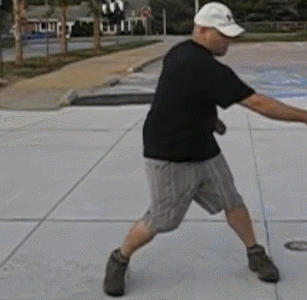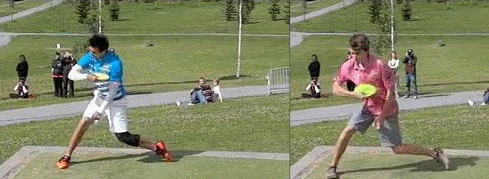HyzerUniBomber
* Ace Member *
In that Brinster video, the stand still shots are all upshots and it was interesting to see that he uses the "rail pull" for upshots and then the avg/good pull for drives.
A true stand still drive, where you are trying to throw for distance is kind of a rare thing. There's all the motion with taking a hop or a step that makes sliding/pushing into the plant foot easier. Take away the step and now you have to add something that doesn't' exist in the stand still drive to the system.
Also, it occurred to me that the amount and complete use various power generating mechanics are adjusted for how much distance you need. On a 200-250' upshot, I don't need to uncork late or twist the hips - I can easily hit that distance with a smooth wide pull.
A true stand still drive, where you are trying to throw for distance is kind of a rare thing. There's all the motion with taking a hop or a step that makes sliding/pushing into the plant foot easier. Take away the step and now you have to add something that doesn't' exist in the stand still drive to the system.
Also, it occurred to me that the amount and complete use various power generating mechanics are adjusted for how much distance you need. On a 200-250' upshot, I don't need to uncork late or twist the hips - I can easily hit that distance with a smooth wide pull.

